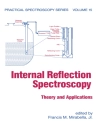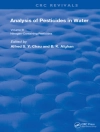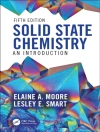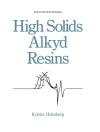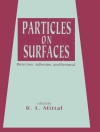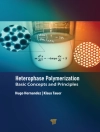Water is one of the essential resources on our planet. Therefore, fresh water and the recycling of waste-water are very important topics in various areas. Energy-saving green technologies are a demand in this area of research.
Photocatalysis comprises a class of reactions which use a catalyst activated by light. These reactions include the decomposition of organic compounds into environmental friendly water and carbon dioxide, leading to interesting properties of surfaces covered with a photocatalyst:
they protect e.g. against incrustation of fouling matter, they are self-cleaning, antibacterial and viricidal. Therefore, they are attractive candidates for environmental applications such as water purification and waste-water treatment.
This book introduces scientists and engineers to the fundamentals of photocatalysis and enlightens the potentials of photocatalysis to increase water quality. Also, strategies to improve the photocatalytic efficacy are pointed out: synthesis of better photocatalysts, combination of
photocatalysis with other technologies, and the proper design of photocatalytic reactors. Implementation of applications and a chapter on design approaches for photocatalytic reactors round off the book.
‚Photocatalysis and Water Purification‘ is part of the series on Materials for Sustainable Energy and Development edited by Prof. G.Q. Max Lu. The series covers advances in materials science and innovation for renewable energy, clean use of fossil energy, and greenhouse gas mitigation and associated environmental technologies.
Inhaltsverzeichnis
PREFACE
PART I: Fundamentals: Active Species, Mechanisms, Reaction Pathways
IDENTIFCATION AND ROLES OF THE ACTIVE SPECIES GENERATED ON VARIOUS PHOTOCATALYSTS
Key Species in Photocatalytic Reactions
Trapped Electron and Hole
Superoxide Radical and Hydrogen Peroxide (O2 and H2O2)
Hydroxyl Radical (OH)
Singlet Molecular Oxygen (1O2)
Reaction Mechanisms for Bare Ti O2
Reaction Mechanisms of Visible-Light-Responsive Photocatalysts
Conclusion
PHOTOCATALYTIC REACTION PATHWAYS – EFFECTS OF MOLECULAR STRUCTURE, CATALYST, AND WAVELENGTH
Introduction
Methods for Pathway Determination
Prototypical Oxidative Reactivity in Photocatalytic Degradations
Prototypical Reductive Reactivity in Photocatalytic Degradations
The Use of Organic Molecules as Test Probes for Next-Generation Photocatalysts
Modified Catalysts: Wavelength-Dependent Chemistry of Organic Probes
Conclusions
PHOTOCATALYTIC MECHANISMS AND REACTION PATHWAYS DRAWN FROM KINETIC AND PROBE MOLECULES
The Photocatalyic Rate
Surface Speciation
Multisite Kinetic Model
Conclusion
PART II: Improving the Photocatalytic Efficacy
DESIGN AND DEVELOPMENT OF ACTIVE TITANIA AND RELATED PHOTOCATALYSTS
Introduction – a Thermodynamic Aspect of Photocatalysis
Photocatalytic Activity: Reexamination
Design of Active Photocatalysts
A Conventional Kinetics in Photocatalysis: First-Order Kinetics
A Conventional Kinetics in Photocatalysis: Langmuir – Hinshelwood Mechanism
Topics and Problems Related to Particle Size of Photocatalysts
Recombination of a Photoexcited Electron and a Positive Hole
Evaluation of Crystallinity as a Property Affecting Photocatalytic Activity
Electron Traps as a Possible Candidate of a Recombination Center
Donor Levels – a Meaning of n-Type Semiconductor
Dependence of Photocatalytic Activities on Physical and Structural Properties
Synergetic Effect
Doping
Conclusive Remarks
MODIF IED PHOTOCATALYSTS
Why Modifying?
Forms of Modification
Modified Physicochemical Properties
IMMOBILIZATION OF A SEMICONDUCTOR PHOTOCATALYST ON SOLID SUPPORTS: METHODS, MATERIALS, AND APPLICATIONS
Introduction
Immobilization Techniques
Supports
Laboratory and Industrial Applications of Supported Photocatalysts
Conclusion
WASTEWATER TREATMENT USING HIGHLY FUNCTIONAL IMMOBILIZED TIO2 THIN-FILM PHOTOCATALYSTS
Introduction
Application of a Cascade Falling-Film Photoreactor (CFFP) for the Remediation of Polluted Water and Air under Solar Light Irradiation
Application of Ti O2 Thin-Film-Coated Fibers for the Remediation of Polluted Water
Application of Ti O2 Thin Film for Photofuel Cells (PFC)
Preparation of Visible-Light-Responsive Ti O2 Thin Films and Their Application to the Remediation of Polluted Water
Conclusions
SENSITIZATION OF TITANIA SEMICONDUCTOR: A PROMISING STRATEGY TO UTILIZE VISIBLE LIGHT
Introduction
Principle of Photosensitization
Dye Sensitization
Polymer Sensitization
Surface-Complex-Mediated Sensitization
Solid Semiconductor/Metal Sensitization
Other Strategies to Make Titania Visible Light Active
Conclusions
PHOTOELECTROCATALYSIS FOR WATER PURIF ICATION
Introduction
Photoeffects at Semiconductor Interfaces
Water Depollution at Photoelectrodes
Photoelectrode Materials
Electrodes Preparation and Reactors
Conclusions
PART III: Effects of Photocatalysis on Natural Organic Matter and Bacteria
PHOTOCATALYSIS OF NATURAL ORGANIC MATTER IN WATER: CHARACTERIZATION AND TREATMENT INTEGRATION
Introduction
Monitoring Techniques
By-products from the Photocatalytic Oxidation of NOM and its Resultant Disinfection By-Products (DBPs)
Hybrid Photocatalysis Technologies for the Treatment of NOM
Conclusions
WATERBORNE ESCHERICHIA COLI INACTIVATION BY TIO2 PHOTOASSISTED PROCESSES: A BRIEF OVERVIEW
Introduction
Physicochemical Aspects Affecting the Photocatalytic E. coli Inactivation
Using of N-Doped Ti O2 in Photocatalytic Inactivation of Waterborne Microorganisms
Biological Aspects
Proposed Mechanisms Suggested for Bacter
Über den Autor
Pierre Pichat, as ‚Directeur de Recherche‘ with the CNRS (National Center for Scientific Research, France), has been active in heterogeneous photocatalysis for many years and has founded in Lyon, France, a laboratory principally based on this field. His research activity has concerned both basic investigations (role of photo-generated active species, reaction pathways, relationships between the efficacy and the characteristics of the materials, etc.) and applications regarding not only the photocatalytic treatment of water, but also self-cleaning materials and the purification of indoor air. He has been invited to publish reviews of these various domains. He has been and is a frequent invited lecturer at Conferences. He has received an International Appreciation Award acknowledging his pioneering contributions.
Over the years, he has served on CNRS-related Committees on diverse aspects of chemistry, such as catalysis, photochemistry, solar chemistry and environmental chemistry. He has been the coordinator or advisor of European Community projects on photocatalysis. He has been asked by Institutions of various countries to evaluate projects on environmental chemistry. He has been and is a member of International Scientific Committees of Journals and Conferences.



